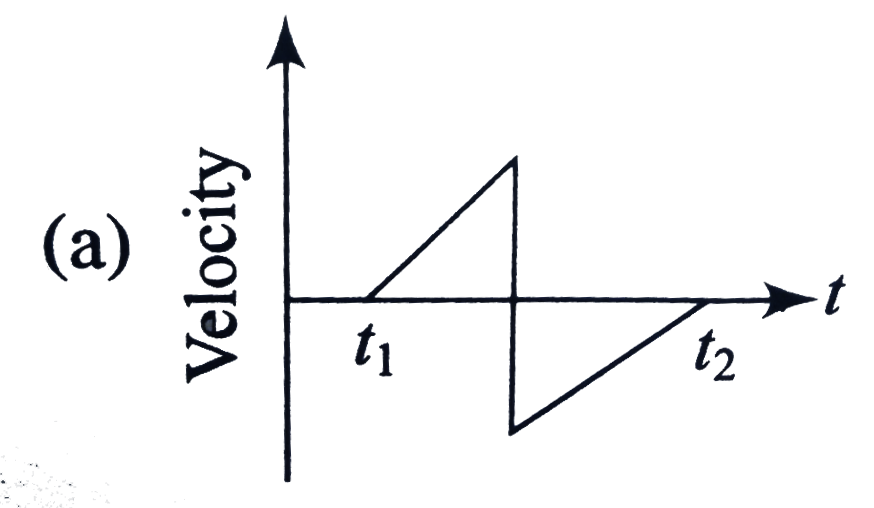Which of the following change appreciably when a batsman hits a moving cricket ball ?
A. Shape B. Direction C. Size D. speed
A and B
B and C
A and C
B and D
The correct Answer is:D
To solve the question "Which of the following change appreciably when a batsman hits a moving cricket ball?" we need to analyze each option provided: A. Shape, B. Direction, C. Size, and D. Speed.
1. Understanding the Scenario:
- A batsman is facing a moving cricket ball. The ball is coming towards him in a certain direction.
2. Analyzing the Options:
- Option A: Shape:
- The cricket ball is round and its shape does not change when it is hit by the bat. Therefore, this option is incorrect.
- Option B: Direction:
- When the batsman hits the ball, it changes direction. Initially, the ball is moving towards the batsman, and after being hit, it goes in a different direction (towards the boundary). Thus, this option is correct.
- Option C: Size:
- The size of the cricket ball remains constant regardless of being hit. It does not change in size. Therefore, this option is incorrect.
- Option D: Speed:
- When the batsman hits the ball, the speed of the ball changes. The ball may speed up or slow down depending on how hard the batsman hits it. Thus, this option is correct.
3. Conclusion:
- The options that change appreciably when a batsman hits a moving cricket ball are B (Direction) and D (Speed). Therefore, the correct answer is B and D.
Final Answer:
B (Direction) and D (Speed) are the correct options.
---
- A batsman is facing a moving cricket ball. The ball is coming towards him in a certain direction.
- Option A: Shape:
- The cricket ball is round and its shape does not change when it is hit by the bat. Therefore, this option is incorrect.
- Option B: Direction:
- When the batsman hits the ball, it changes direction. Initially, the ball is moving towards the batsman, and after being hit, it goes in a different direction (towards the boundary). Thus, this option is correct.
- Option C: Size:
- The size of the cricket ball remains constant regardless of being hit. It does not change in size. Therefore, this option is incorrect.
- Option D: Speed:
- When the batsman hits the ball, the speed of the ball changes. The ball may speed up or slow down depending on how hard the batsman hits it. Thus, this option is correct.
- The options that change appreciably when a batsman hits a moving cricket ball are B (Direction) and D (Speed). Therefore, the correct answer is B and D.
B (Direction) and D (Speed) are the correct options.
Topper's Solved these Questions
Similar Questions
What happens when a cricket ball is hit by the batsman?
View Solution(a) When a molecule (or an elastic ball) hits a (massive) wall, it rebounds with the same speed. When a ball hits a massive bat held firmly, the same thing happens However, when the bat is moving towards the ball, the ball rebounds with a different speed. Does the ball move faster or slower?
(b) When gas in a cylinder is compressed by pushing in a piston. Its temperature rises. Guess at an explanation of this in terms of kinetic theory using (a) above
(c) What happens when a compressed gas pushes a piston out and expands. What would you observe?
(d) Sachin Tendulkar uses a heavy cricket bat while playing. Does it help him in any way?
View Solution
Knowledge Check
A batsman hits a sixes and the ball touches the ground outside the cricket ground. Which of the following graph describes the variation of the cricket ball's vertical velocity v with time between the time t1 as it hits the bat and time t2 when it touches the ground?
A B
B C
C D
D
which of the following cell can change their shape ? A. white blood cell B . Amoeba cell C. red blood cell D. euglena cell
AA and BBB and CCA and DDB and DWhich one of the following insects cannot be called a 'social insect' ?
A. Bees
B. Crickets
C. Termites
D. AntsACBBCDDA
Which of the following bodies have more inertia?
(i) A metal ball and a rubber ball of the same size.
(b) A car and a bus.
View SolutionWhich two of the following changes (A-B) usually tend to occur in the plain dwellers when they move to high altitudes (3500 m or more )
(A) Increase in red blood cell size
(B) Increase in red blood cell production
( C) Increased breathing rate
(D) Increase in thrombocyte count
View SolutionWhich two of the following changes (a-d) usually tend to occur in the plain dwellers when they move to high altitude (3,500 m or more )
(a) Increase in red blood cell size
(b) Increase in red blood cell production
(c) Increased breathing rate
(d) Increase in thrombocyte count
Changes occuring are
View SolutionWhich two of the following changes (A-B) usually tend to occur in the plain dwellers when they move to high altitudes (3500 m or more )
(A) Increase in red blood cell size
(B) Increase in red blood cell production
( C) Increased breathing rate
(D) Increase in thrombocyte count
View SolutionA ball A of mass 1kg , moving with a speed of 12m/s , collides obliquely and elasticity with another ball B which was initially at rest. Ball A then moves off at the right angle to its initial direction with a speed of 5m/s. The momentum of ball B after the collision is
View Solution
